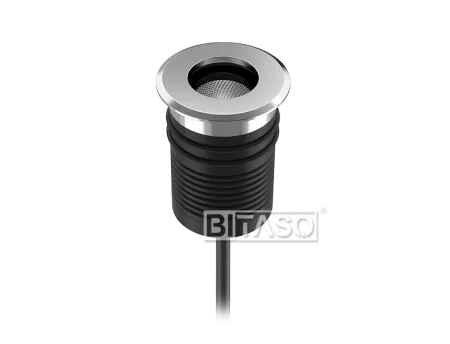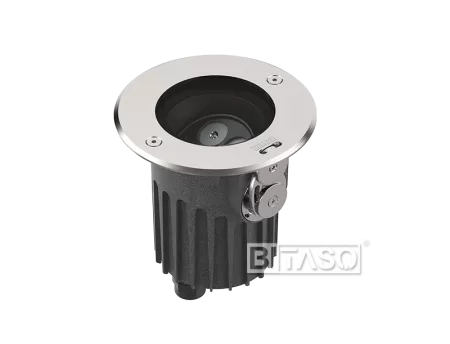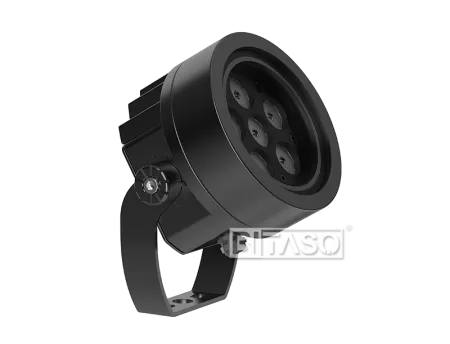Jul. 11, 2024
Discover the importance of facade lighting in enhancing building aesthetics and learn how to choose the right facade lighting for your project.
Facade lighting is widespread in cities and can significantly improve the ornamental qualities of buildings. This article will explain what facade lighting is and how to choose the best facade lighting for your needs. Let’s get started.
Facade lighting is a type of lighting used to illuminate the exterior of a building. It can highlight specific architectural features or provide general illumination, enhancing the building's overall appearance and making it stand out, especially at night.
Various types of facade lighting can be used, including spotlights, floods, and downlights. The type of facade lighting that is used will usually depend on the specific needs of the building and the design of the facade.
In addition to its aesthetic benefits, facade lighting enhances building safety and security. Well-lit exteriors make people feel safer when walking around at night and serve as a deterrent against crime.
Facade lighting plays a crucial role in building design, enhancing the artistic appeal, ensuring even light distribution, and creating a striking overall impression. Many iconic architectural structures, such as the Seven Wonders of the World, feature stunning lighting on their main facades to highlight their beauty and enhance their impact.
These lights contribute to the optimal aesthetic of these buildings, making a significant difference in their appearance and acoustic performance. Numerous lighting products on the market can help achieve the perfect facade designs, particularly for tourist attractions.
Countries with rich architectural histories often use facade lighting to make their landmarks more appealing. For instance, Paris, known as the "City of Lights," has over 296 illuminated landmarks and is famous for its unique and attractive lighting designs, drawing visitors from around the world.
Facade lighting is popular because it is available in a variety of designs and options, allowing for customized exterior designs. Let's explore the different types of facade lighting and how they can help create the perfect exterior aesthetic.
Today's buildings often feature a variety of facade lighting to enhance their aesthetic appeal. The facades may differ in shape and design, but versatile lighting options can help create the best impressions. Here are the main types of facade lighting available:
A solid facade is a smooth wall without designs, commonly found in many buildings. Natural lighting techniques work best for these facades, as they lack design variations. Solid facades, being large and smooth surfaces, can efficiently accommodate a range of lighting options. Designers can mix different light temperatures and variations to create impressive looks.
Vertically divided facades require a change of lighting direction due to their structure. Options like narrow beams work well for these buildings. The vertical division necessitates creating separation between walls and architectural sections. Additionally, downlights and uplights can enhance the appearance of vertically divided facades.
Horizontally divided facades create different kinds of shadows under the light, which can enhance the texture and look of the lighting. Although installing lights on horizontal divisions can be tricky due to difficult installation areas, it can significantly improve the building's appearance. Reducing shadows to illuminate the building highlights attractive elements and creates a more balanced look in the surroundings.
A perforated facade allows designers to blend and mix different light fixtures to create perfect textures and highlight building features. These facades make the surface pop and enhance visibility. However, they require additional planning due to the complexity of blending different light varieties. Factors like energy costs, project size, and maintenance costs play a vital role. Consideration of the light shape and overall architecture is also essential.
Creating the perfect facade lighting design requires considering several factors, making it a complex task. It is essential to incorporate best practices to save resources and achieve optimal lighting effects, even at night. The challenge increases when designers attempt to replicate natural lighting. Understanding the architectural structure's style and variations is crucial in selecting the best-fitting lights.
Here are some facade lighting techniques designers can use when designing building exteriors:
Uniform lighting involves spreading an equal intensity of light across a facade, making it a fundamental practice in facade lighting. This technique helps create balanced designs even on large surface areas. Floodlights are the most common choice for achieving uniform lighting, as they distribute light evenly throughout the building. However, any light design and style can be used if it properly accentuates the structure.
Designers should place these lights close to the building, ideally on top, to ensure the light spreads uniformly across surfaces. The key element is the distance between the light source and the surface to be illuminated. The light range is directly proportional to its intensity, so positioning the light at an appropriate distance is crucial. Additionally, directional lights can be used alongside floodlights to highlight specific building features. Although directional lights are smaller and weaker than floodlights, they are still essential for architectural designs.
Choosing narrow beams can enhance the lighting effect while avoiding light pollution.
Local lighting focuses on specific points of the vertical facade structure, such as elevations, pillars, or building plates. This technique not only highlights particular architectural features but also offers energy efficiency. Designers can mix different types of local lights to create more intricate and compelling designs.
Hidden illumination is the most complex lighting method, but it can produce stunning facade designs. It can create a dramatic look, enhance the building's structure, and improve its overall appearance. Designers can choose different approaches for hidden illumination, such as silhouettes, where lights are placed strategically to create shapes with shadows and draw attention to individual architectural elements.
Another effective technique is contouring, which involves using LED strips to outline the building, giving it a glowing effect and adding more dramatic designs.
Additional methods include:
- Direct Lighting: Lights fall directly on the facade, highlighting the surface itself.
- Grazing: Placing facade lights near a vertical surface, typically at the bottom, so the light fades as it reaches the top, effectively highlighting textured surfaces.
- Washing: Lights are placed far from the surface to light up flat facades, adding more dimension and life.
- Accentuating: The opposite of washing, this technique places lights close to the facade to create dramatic effects with columns, openings, and building details.
Facade lighting is an essential tool for enhancing and revitalizing any structure that might otherwise appear plain. Available in various designs, installation options, and color temperatures, these lights offer architects and designers the flexibility to experiment and achieve the perfect aesthetic.
By carefully selecting and implementing facade lighting, buildings can stand out, gain aesthetic value, and increase their overall appeal. It's crucial to adhere to proper design practices and integrate elements that harmonize with the surrounding environment. Starting with simple components like floodlights and progressing to more intricate designs can transform the visual impact of any architectural project.
Hot Products

DIAMOND D38 SMD
Luminaures with CREE COB or XP-E/G LEDS provide excellent light quality with highly precise light distribution,free of colour shifts and dis-tortion,special PCB layouts ensure the led moudules are optimally matched to the optical system of the luminaires.

EARTHA D135 SMD Beam Angle Adjustable Uplight
Beam Direction Adjustable In-Ground Light D135 SMD Outdoor 6W-12W DC48V

MILESTONE D120 SMD Bracket
Surface Architectural Floodlight Milestone D120 SMD Bracket 15-24W
Contact Us
E-mail: sales@bitaso-lite.com
Tel.: +86 758 2801 266
Phone: +86 186 2047 1396
Add.: No.308, Lianhai Rd., Jianghai District, Jiangmen City, GD.P.R. China